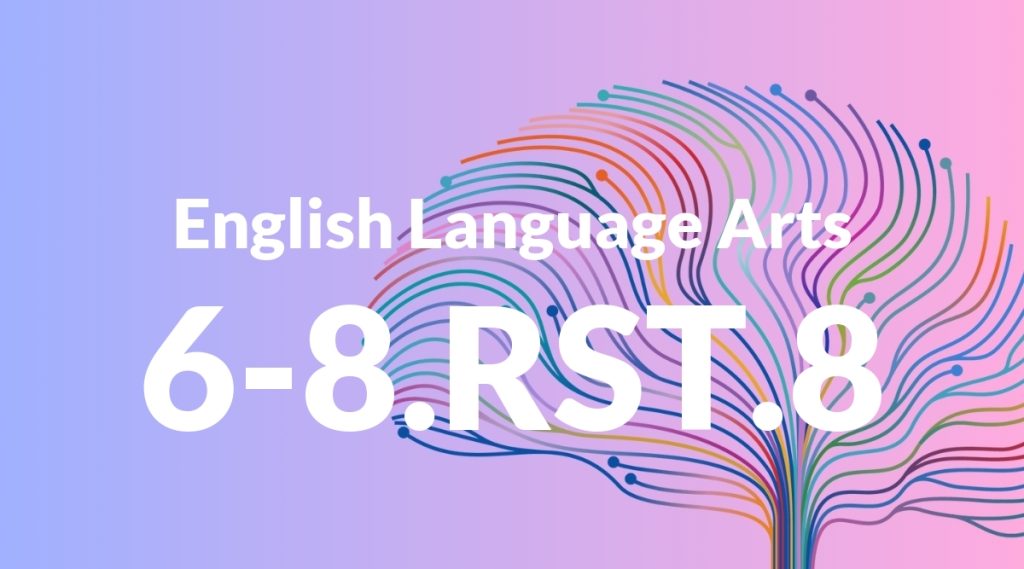Standard: 6-8.RST.8 – Distinguish among facts, reasoned judgment based on research findings, and speculation in a text.
Grade level: Grade 6-8
Subject: English Language Arts
Domain: Science & Technical Subjects
Teacher Overview
This standard emphasizes the importance of critical reading skills in distinguishing among facts, reasoned judgments, and speculation in texts. Mastery of this skill is crucial for students to navigate and evaluate the vast amount of information they encounter daily, especially in scientific and technical contexts. Students should already understand the basic differences between facts and opinions, and have some experience with reading and interpreting various types of texts.
Upon mastering this standard, students will be better equipped to critically evaluate texts, which will aid in their ability to construct well-supported arguments and engage in informed discussions.
Common Misconception 1
Some students may think that all information presented in a text is factual. This is incorrect because texts often contain a mix of facts, opinions, and speculative statements. It’s important for students to learn how to identify and differentiate these elements.
Intervention 1
Use guided reading sessions where students highlight and categorize different types of information in a text. Discuss the purpose of each type and how to recognize them.
Common Misconception 2
Another common misconception is that reasoned judgment and speculation are the same. However, reasoned judgment is based on evidence and logical reasoning, while speculation is more about guesses without solid evidence.
Intervention 2
Engage students in activities where they evaluate statements and provide evidence to classify them as reasoned judgment or speculation. Use peer review to reinforce understanding.
Prerequisite Knowledge
Students should have a basic understanding of distinguishing between facts and opinions, familiarity with different types of texts (e.g., narrative, expository), and basic research skills.
Subsequent Knowledge
Students will develop critical thinking skills, an ability to evaluate the credibility of sources, and a deeper understanding of how to construct well-supported arguments in their writing.
Instructional Activities
- Group discussions analyzing different types of texts
- Highlighting and categorizing information in scientific articles
- Debates on controversial topics using evidence-based arguments
- Writing assignments that require distinguishing facts from opinions
- Interactive quizzes on identifying types of information




